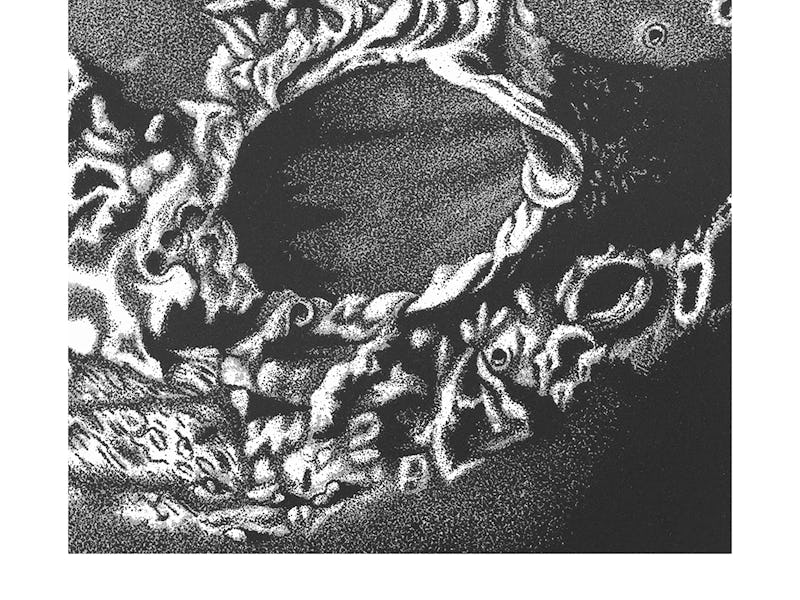How China’s Yutu-2 rover unearths secrets in the Moon’s dirt
Plus: Black holes with a soft side.

Hear me out — dirt is magical. When I was in college, I used to sit in the grass and watch small bugs wend their way through dirt to decompress from reading too much Rilke. And centuries ago, people bathed in mud to cool their too-warm bodies (or bathed rarely, keeping the dirt close). Now, China’s Yutu-2 Moon rover is raking Moon dirt, preparing scientists for what else they might find on our favorite next-door rock.
What’s your relationship to dirt? Share your memories of digging up worms, send a photo of your flower garden, or give us your secret mud pie recipe by responding to this email — we’ll feature the most creative responses in next week’s Inverse Daily. Until then, I’m Ashley Bardhan, newsletter writer at Inverse. Let’s get messy.
This is an adapted version of the Inverse Daily newsletter for Friday, January 21, 2022. Subscribe for free and earn rewards for reading every day in your inbox. ✉️
Seems... sticky?
Three Moon discoveries from China’s Yutu-2 rover
China’s Yutu-2 rover is digging up the Moon’s dirt, and I am thrilled.
“Yutu-2 has yielded information about the subsurface structure of the Moon’s far side and details about the lunar regolith that you can only learn by physically stirring up the dirt,” writes Jon Kelvey. “The results could help guide further lunar exploration by both China and the US.”
A lot of the textural information that Yutu-2 determined will be integral to future exploration of the Moon, including future human missions like NASA’s Artemis program. “Yutu-2 will continue exploring the far side of the Moon, and the researchers hope to make better use of the tools the rover makes available to learn even more about the environment,” writes Kelvey.
This is why we care: According to Yutu-2, the far side of the Moon can be flat, pitted, and even sticky. This is invaluable information for upcoming lunar missions, both human and robotic, and a sign that maybe you shouldn’t start that Moon Heelys business you’ve been thinking about.
Moon shoes are okay: These are the best places for humans to colonize the Moon
Aw, she’s such a good mom.
Study reveals the gentler side of black holes
Despite being inescapable pits of gravity, a black hole isn’t all bad, okay? It even has a knack for parenting — at least a recent study published in Nature suggests so.
“Scientists observed a black hole birthing new stars in a dwarf galaxy for the first time, providing evidence as to how these all-consuming objects can create stellar nurseries,” writes Passant Rabie. “The observations also reveal how ancient black holes may have formed shortly after the Big Bang.”
In the study, researchers concentrated on Henize 2-10, “an irregularly shaped dwarf galaxy, meaning that it is much smaller than the Milky Way and with much fewer stars,” writes Rabie. Despite that, it contains an enormous supermassive black hole with a gas outflow “gentle” enough to create stars.
This is why we care: Henize 2-10 gives researchers a key to unlocking ancient black hole secrets, including how they were formed and their relationship to the galaxies that contain them.
Take a look around: 3D imaging reveals a supermassive black hole’s secrets
There’s a lot to be improved.
Solar power is a necessary evil
In the final installment of Inverse’s reporting on Tajikistan’s ongoing climate apocalypse, writer Klas Lundstrom documents life in an electricity-free town. Needless to say, it’s difficult.
“‘Electricity would change all aspects of life,’” says Alichur resident Munira Niyozbekovo, “‘We could have hot showers in winters.’”
“But since the fall of the Soviet Union and Tajikistan’s subsequent independence in 1991, neither state-supplied electricity nor state water has reached Alichur, a town of 2,000 people that sits 13,000 feet above sea level in the Pamir Mountains,” writes Lundstrom. Now, for energy, residents are forced to rely on toxic indoor fuels made of coal and manure and solar power, which has its own drawbacks.
This is why we care: Alichur’s rusty, unreliable solar power is an example of how global aid fails the most remote, impoverished parts of the world. It doesn’t have to be this way.
“We’re waiting for another way of life.”
It might be coming: Why one Nordic country offers a future without air travel
The majestic beetle appears.
Microscopic beetle bends the rules of flight
“The featherwing beetle Paratuposa placentis is hard to see without a microscope,” writes card story editor Jennifer Walter. “The little bug only gets up to a millimeter in size, and for a while, researchers weren’t sure if the species was capable of flight.”
But new research reveals that the beetle is capable of flight, and it can do so with unexpected quickness. “The featherwing beetle is so efficient that it bends the rules of flight in the animal kingdom,” writes Walter, and the beetle is able to use its spindly, skeleton-like wings to go as fast as beetles three times its size.
You can watch the tiny flapping in action by clicking through the entire card story.
This is why we care: The featherwing beetle challenges what researchers thought about bugs, and it could trigger a wave of new research. Bigger isn’t always better.
You know The Beatles, but what about These Beetles?
Go deeper: The truth about eating bugs
One day, you’ll be among the stars.
About this newsletter: Do you think it can be improved? Have a story idea? Want to share a story about the time you met an astronaut? Send those thoughts and more to newsletter@inverse.com.
- On this day in history: Beginning on January 21, 2020, NASA started preparing to Green Run test its superpowered Space Launch Systems (SLS) rocket’s first core stage. The rocket is set to meet the Moon this year… if NASA can save it from glitching.
Song of the day: “Rocket’s Tail,” by Kate Bush.